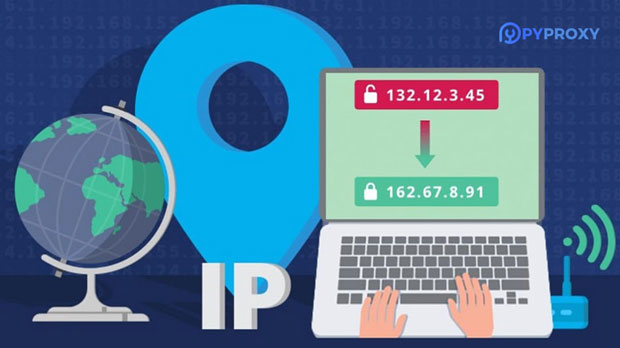When it comes to choosing between cheap socks5 proxy services and high-end premium proxy services, the differences can be quite significant, depending on your specific needs and expectations. While both types of services offer the ability to route internet traffic through a proxy server, the level of performance, security, reliability, and customer support varies greatly. Cheap socks5 proxies often come with limitations, such as slower speeds, less security, and more frequent downtime. On the other hand, high-end proxy services offer advanced features like better encryption, higher speeds, and more robust customer support. This article will explore these differences in depth, helping you make an informed decision about which type of proxy service best suits your needs. 1. Understanding SOCKS5 Proxies: A Brief OverviewBefore diving into the differences between cheap and premium SOCKS5 proxies, it's essential to understand what SOCKS5 proxies are and how they work. SOCKS5 is the latest version of the SOCKS protocol, which is widely used for routing internet traffic through a proxy server. Unlike HTTP proxies, SOCKS5 works at a lower level and can handle all types of internet traffic, including web browsing, email, and file transfers.One of the primary benefits of SOCKS5 proxies is that they can provide users with enhanced anonymity by masking their real IP address. This makes SOCKS5 proxies popular for a variety of use cases, including online security, privacy, web scraping, and bypassing geo-restrictions. However, the quality and reliability of these proxies can vary greatly, which is where the distinction between cheap and premium services comes into play.2. Speed and Performance: A Major DifferenceSpeed and performance are two of the most critical factors when choosing a SOCKS5 proxy. In general, cheap SOCKS5 proxies are often slower compared to their premium counterparts. This is because low-cost proxies are typically oversold, meaning that many users are sharing the same server, which can lead to congestion and slower speeds. Additionally, cheap proxies may use outdated infrastructure, resulting in high latency and slower response times.On the other hand, premium SOCKS5 proxies are designed to deliver better performance. These services often have dedicated servers with higher bandwidth, ensuring faster and more stable connections. Premium providers also tend to have better load balancing techniques, reducing the chances of network congestion. If you require high-speed proxies for tasks such as streaming, gaming, or large-scale web scraping, a premium service is usually the better option.3. Security and Privacy: How Secure is Your Connection?When it comes to security, cheap SOCKS5 proxies often fall short in comparison to premium options. Low-cost proxies may not implement strong encryption protocols, leaving users vulnerable to data leaks, man-in-the-middle attacks, and other security risks. Moreover, some cheap proxy services may log your internet activity, potentially compromising your privacy.In contrast, premium SOCKS5 proxies usually offer stronger encryption, such as AES (Advanced Encryption Standard), to ensure that your data is securely transmitted. Additionally, reputable high-end providers often have strict no-logs policies, meaning they do not track or store your browsing history. This is especially important for individuals who prioritize privacy and need to ensure their online activities are completely anonymous.4. Reliability and Uptime: Which Service is More Stable?Reliability and uptime are essential factors to consider when choosing a SOCKS5 proxy. Cheap proxies often experience frequent downtimes and disruptions due to poor infrastructure, overloading, or lack of proper maintenance. This can be particularly frustrating if you rely on proxies for business operations or high-priority tasks.Premium SOCKS5 proxy services, on the other hand, tend to have much better uptime. They invest in reliable server infrastructure, often with data centers in multiple geographic locations to reduce the risk of outages. Many high-end providers also have 24/7 monitoring in place to detect and resolve issues quickly. If reliability is a top concern, premium proxies are generally a safer bet.5. Customer Support: Access to Assistance When You Need ItAnother notable difference between cheap and premium SOCKS5 proxies is the level of customer support provided. Cheap proxy services often provide limited or no customer support, leaving users to troubleshoot issues on their own. This can be a major downside if you encounter technical problems or need help setting up the proxy.Premium proxy providers, however, usually offer more robust customer support, with 24/7 assistance via multiple channels such as live chat, email, or phone. High-end services may also provide dedicated account managers for enterprise-level customers, ensuring that any issues are resolved promptly. This level of support can be particularly valuable for businesses or individuals who rely on proxies for critical tasks and cannot afford prolonged downtime.6. Geographical Coverage: Access to More LocationsFor certain use cases, such as bypassing geo-restrictions or performing large-scale web scraping, the number and variety of proxy server locations are crucial. Cheap SOCKS5 proxy services may only offer a limited selection of servers, often concentrated in a few regions. This can result in poor performance if you're trying to access content from a location where the proxy has no servers.Premium SOCKS5 proxy services, in contrast, usually offer a broader selection of servers in various countries and regions. This not only improves the chances of finding a fast and reliable server but also gives users more options when it comes to geo-unblocking. High-end services may even provide specialized proxy servers for specific tasks, such as mobile proxies or residential proxies, which can help improve success rates for web scraping and similar activities.7. Cost vs. Value: Is It Worth Paying More?One of the key considerations when choosing between cheap and premium SOCKS5 proxies is the cost-to-value ratio. While cheap proxies may seem like an attractive option for users on a budget, the trade-offs in terms of speed, security, reliability, and customer support may not justify the low price.Premium SOCKS5 proxies, while more expensive, typically provide better value in the long run. If you're using proxies for business or other important tasks, the additional investment can be worthwhile. The higher cost often translates into faster speeds, better security, more reliable uptime, and superior customer support, all of which can enhance your overall experience and reduce the likelihood of encountering issues.8. Conclusion: Choosing the Right SOCKS5 Proxy for Your NeedsThe choice between cheap and premium SOCKS5 proxy services ultimately depends on your specific requirements. If you're looking for a basic proxy for casual browsing or simple tasks and are willing to accept slower speeds and potential reliability issues, a cheap SOCKS5 proxy might suffice. However, if you need a high-performance proxy for more demanding tasks, such as streaming, gaming, or large-scale web scraping, a premium service is likely the better choice.In the end, the right proxy service for you will depend on your priorities—whether that's speed, security, reliability, customer support, or geographical coverage. By carefully considering these factors, you can select the best SOCKS5 proxy service that aligns with your needs and budget.
Dec 31, 2024
![arrow]()


















































